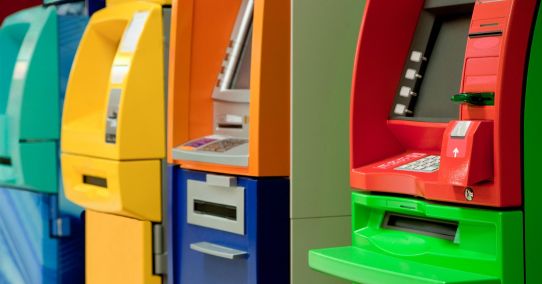
Guest post by Herve Lesage, Xerox Global Marketing Manager, Financial Services and Insurance Industries
Ten years ago, customers were comfortable dealing with their bank through paper-based communication and processes. Opening an account, applying for a loan, ordering checks – it was all paper, paper, paper. Financial services organizations were well prepared to deal with that model and deliver the expected customer experience.
Today? Not so much. Customers have changed. Markets have changed. Processes have changed. Banks have changed. Or have they?
Retail Banking Digital Journey: From 1.0 to 3.0.
To further complicate things, not all banking customers are in the same place, so expectations differ. While a growing number are comfortable with electronic statements and online banking, a solid core of customers still prefer traditional banking experiences, including paper statements and face-to-face services.
Banking models also span a continuum of digital preparedness. Think of these stages as going from Retail Banking 1.0 to Retail Banking 3.0, a concept introduced in 2014 by Mattieu Acin-Tallier, Xerox Principal Architect for the Financial Services industry.
Retail Banking 1.0
- Low connectivity, non-digital engagements
- Traditional products and banking experience
How MPS and document management help:
- Introduces paper-to-digital workflow, so customer has comfort of paper experience, while bank employees can start using more digital processes.
- Accelerates ingestion of documents for faster, more economical and more accurate processing
- Transactional print for mailed paper statements, perhaps with an integrated work stream for digital delivery to appropriate accounts
- Integrated touch-points: front office, customer service centers, back office operations
Retail Banking 2.0
- Connected environment
- One-size-fits all approach with commoditized products
How MPS and document management help:
- Online apps and processes for document workflow
- Mobile capture and distributed capture for convenience
- Workflow automation in place
- ePresentment / distribution of statements and other documents
Retail Banking 3.0
- Ultra connected
- High-value services and margin-tailored products
How MPS and document management help:
- Use of eSignatures for uninterrupted digital workflow
- Mobile document network
- Social media communications
- Predictive analytics
- Omni-channel integration
Digital Processes Make You More Competitive
New players, the 3.0 “banks”, provide the same loan, mortgage, wealth management and other services at a fraction of the cost of a 1.0- or 2.0-level operation. As more customers defect to these digitally enabled competitors, laggard banks stand to lose billions in profitability. Change is critical and inevitable. The question is, will it be proactive or reactive?
A Next Gen Managed Print Services (MPS) vendor can guide your bank along the digital journey continuum, starting from wherever you are. Next Gen MPS makes extensive use of analytics and assessments to identify sluggish paper processes and potential data risks. When the MPS provider has a deep solutions portfolio, banks make progress step by step, beginning with the most labor- and document-intensive workflow.
What’s Needed in an MPS Partner?
What retail banks need in a document management partner has evolved, too. The ideal provider helps banks realize efficiencies and grow revenue, with solutions that improve customer service, ensure compliance and manage structured and unstructured data and paper more efficiently and effectively.
MPS providers offer solutions to help banks in three areas: analytics, processes and most importantly, customer experience. Expect your MPS partner to be present and accountable across the customer life cycle, starting with customer acquisition, then along through other services like loans.
For example, a Xerox workflow automation solution helps banks overcome the challenges of manual loan processing by automating or removing many of the manual paper handling and document processing steps. Another solution simplifies and shortens the new account onboarding process to nurture customer satisfaction from the first experience. Bank employees gain a consolidated view of all information collected from new clients to support a seamless engagement.
Profitability Through Operational Improvements
Facing low interest rates, and increased capital and liquidity requirements, banks can — and must — control costs by improving operational efficiency. MPS is a proven strategy for more efficient, affordable document operations.
From basic services like fleet optimization to more advanced offerings like process automation, MPS reduces operational costs, making a bank more profitable. It also improves customer service and experience, helping banks retain customers and make positive impressions on new ones.
Wherever there’s a document, MPS can be involved to ensure information is handled and processed in the most efficient way. MPS meets the demands of a variety of banking environments, from the front lobby to the back office, and from Retail Banking 1.0 to 3.0.



